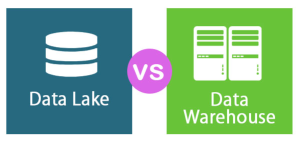
When it comes to data storage, there are two distinct types of solutions that you can use—a data warehouse and a data lake. Both of these solutions have their own benefits, but it’s important to understand the key differences between them so that you can choose the best option for your needs. Let’s take a closer look at what makes each solution unique.
What is a Data Warehouse?
A data warehouse is defined as an electronic storage system used for reporting and analysis. Data warehouses store data in a structured (row-column) format. It typically contains aggregated collections of data from multiple sources, which come together in one database. A data warehouse is highly structured, meaning that it stores all of its information in predefined formats and structures. This allows users to quickly access the information they need without having to manually sort through millions of unstructured files. Additionally, because the structure of the data is predetermined, it requires minimal maintenance once set up.
Unlike data lakes, data warehouses require “schema on write” access. This essentially means that the structure of the data needs to be set at the instant it enters the warehouse. For more transformations of this data, the new structure of the data must be made explicit at every step.
Unlike data lakes, data warehouses typically require more structure and schema, which requires that better data hygiene is maintained and this results in less complexity when reading the data from the data warehouses.
Unlike data lakes, data in a data warehouse must have reasons for being there, and those reasons should correspond to one or more business objective of some kind.
Unlike data lakes, data warehouses facilitate fast, actionable querying, making them great for data analytics teams.
The following are some of the most popular data warehouses:
- Amazon redshift
- Google big query
- Snowflake
What is a Data Lake?
In comparison, a data lake is an unstructured repository of large amounts of raw data from various sources, such as web logs and social media platforms. Unlike a data warehouse, which has pre-defined structures and formats for storing information, a data lake stores everything in its original format with no pre-defined schemas or structures. This means that users can store any type of file regardless of size or structure in the same location without worrying about compatibility issues or manual sorting tasks. Additionally, because no structure needs to be manually created before storing files on the platform, this solution is much faster to set up than a traditional database or warehouse system.
Data lakes are ideally suitable for data teams comprising of data engineers who build a more customized platform for others to store and access the data in any format including semi-structured and unstructured data formats. With data lakes, data scientists, ML engineers, and data engineers can access from a much larger pool of data. The following are some common features of a data lake:
- Decoupled storage and compute
- Interoperability and customization
- Built largely on open source technologies
- Ability to handle data of all formats including semi-structure and unstructured data formats
- Support for distributed compute
The following are some of the challenges of the data lake:
- Data integrity
- Data reliability
- Swampification
Unlike data warehouses, data lake architectures permit “schema on read” access. This means the structure of the data can be inferred it is ready to be used.
Data lakes are provided by almost all cloud services provider such as the following:
- AWS S3
- Google cloud storage
- Azure blog storage
- IBM object storage
- Alibaba cloud data lake storage
Conclusion
When deciding which type of solution is right for your organization’s needs, there are several factors that should be taken into consideration. For instance, if speed and scalability are important considerations for your project then a data lake may be the better option due to its ability to ingest large volumes of raw data quickly and easily without pre-defined schemas or structures getting in the way. On the other hand, if accuracy and precision are more important then you may want to consider using a traditional database or data warehouse instead as this will provide you with structured files that are easier to work with over time. Ultimately, choosing between a data warehouse vs data lake depends on what type of project you’re trying to complete and what features are most important for your specific case – but whichever path you choose make sure it’s tailored just for you!
- Mathematics Topics for Machine Learning Beginners - July 6, 2025
- Questions to Ask When Thinking Like a Product Leader - July 3, 2025
- Three Approaches to Creating AI Agents: Code Examples - June 27, 2025
I found it very helpful. However the differences are not too understandable for me